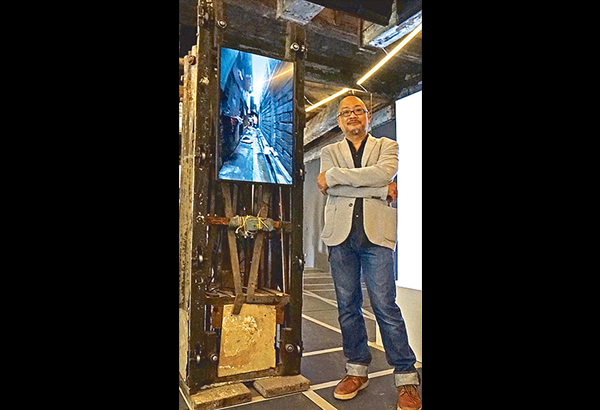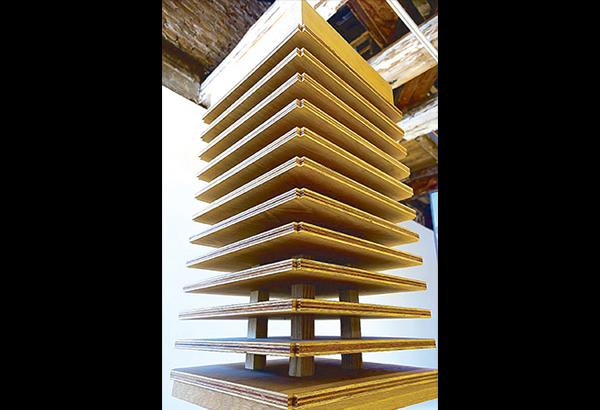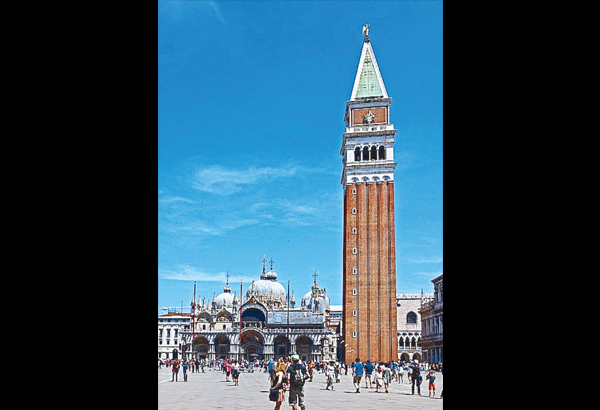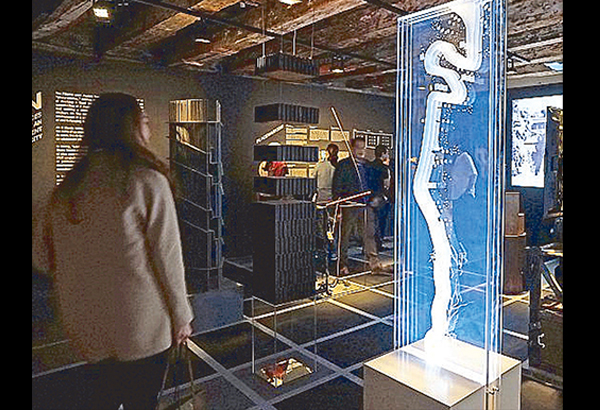Philippine architecture in Venice

We take a break from our continuing series on Philippine plazas and parks with a two-part feature on the Philippine’s inaugural participation at the 2016 Venice Architecture Biennale. It is a semi-break from this column’s current fare since next week we will actually look at Venice, which is a city of plazas, heritage and canals.
Venice is a city that grew from trade between the East and the West. It was established out of over a hundred islands connected by bridges to form what became a city-state. The city’s wealth came from spices and salt, expanding into other goods from the first up to the middle of the second millennia. Since then the city has lost its economic power, its attraction for visitors as well as its but cultural eminence have grown in the last two centuries. Venice is now one of the cultural capitals of the world.

Senator Loren Legarda and head curator Leandro Locsin Jr. (fifth and sixth from right) with (from left) the curators, artists and architects Adrian Alfonso (8x8 Design Studio Co.), Pearl Robles (8x8 Design Studio Co.), Mark Salvatus, Nina Gonzalez (C|S Design Consultancy, Inc.), Bambi Mañosa, Tad Ermitaño, Juan Paolo dela Cruz,Poklong Anading and Sudarshan Khadka Jr. PHOTO BY ELVERT BAÑARES
The Venice Art Biennale is one of the world’s most established and prestigious art events. It was started in 1895 and continues ever other year to this day. Venice also hosts an annual film festival. My interest, of course, is in the Venice Biennale of Architecture, which we never participated in until now.

Tad Ermitano and one of his three installations, featuring the Pandacan bridge as an urban hack by the informal settlers who life around it.
The Philippines has only participated once in the 20th century. Last year, through the efforts of Senator Loren Legarda, with the Department of Foreign Affairs, the National Committee on Culture and the Arts, and the support of the Department of Tourism, the Philippines re-entered the Art Biennale. The exhibits of Jose “Bogie” Tence Ruiz and Manny Montelibano were well received. It was seen by a daily average of 600 visitors to the Philippine pavilion, which was the rustic Pallazo Mora in the district beside Venice’s famous Piazza de San Marco.

Adrian Alfonso and Pearl Robles’ conjecture for the landmark Magsaysay building on Roxas Boulevard.
This year, buoyed by the success of the Art Biennale participation, and through the initiative of the same government patrons, the Philippines debuts in Venice Architecture Biennale. Our entry in the 15th International Architecture Exhibition of La Biennale di Venezia is the exhibition Muhon: Traces of an Adolescent City.
Curated by Leandro Y. Locsin Jr. and his team, Muhon is meant to “take its audience to the past, present and probable future of nine cultural markers in Metro Manila.” Locsin and his associates won the competition to curate the historic exhibit late last year in an open competition that drew 13 varied entries.
The entries were to be guided by the Biennale overall curator, world renowned architect Alejandro Aravena’s vision “to display success stories where architecture did, is and will make a difference in improving the quality of both built environment and people’s lives.” The Philippine Pavilion was, according to Leandro Y. Locsin, Jr., “… (designed) to be a platform for a collaborative and collective act of reflection about the built environment on the edge of the precipice.”
Locsin and his able curatorial team of Sudarshan Khadka, Jr. and Juan Paolo dela Cruz chose six architects along with three contemporary visual artists to participate in creating Muhon.

Venice is really a magnificent and appropriate venue for the architecture biennale. venue for the architecture biennale.
The nine collaborators selected one muhon or landmark of Metro Manila as their subject. These were: Poklong Anading for Kilometer 0 (at Rizal Park); Tad Ermitaño for Pandacan Bridge; Mark Salvatus for Binondo; Eduardo Calma for the Philippine International Convention Center (PICC); Jorge Yulo for Mandarin Hotel; 8x8 Design Studio Co. for the Magsaysay Center; C|S Design Consultancy for Pasig River; Lima Architecture for the Makati Stock Exchange; and Man?osa & Co. for Tahanang Pilipino or Coconut Palace.
Locsin explained that each participant was to “(trace) each Muhon through its history, modernity and conjecture.” This framed the organization of the exhibit into three rooms of the pavilion with nine sections in each room. Locsin expounded that these installations “… aim to grapple with the search of identity through the built environment within the context of an aggressively expanding megacity... “
I was at the opening of the exhibit at Palazzo Mora on a bright and perfect summer afternoon. I must commend the team for being able to install the 27 individual pieces on time and in perfect condition, no mean feat considering all nine collaborators each had unique and distinctive takes on their subjects and each used a diverse palette of materials including wood, concrete and steel.

The pavilion’s first room with Anna Sy’s take on the Pasig River as a landmark shining bright in the middle.
At the pre-opening press conference Senator Legarda thanked all involved and declared that the exhibit would also be mounted back in the Philippine, so the public may benefit from the important message the curators and collaborators expressed in their works. She said that Muhon “underscores the reality that architecture must respond to human needs… that building is not only about creating new structures all the time. It is also about revitalizing communities and connecting the present with the past. Cities and its architecture, in a way, shape our personal narrative while allowing us to connect as a community.”
I asked the senator about the future of state support for culture and the arts. She replied that the government did have funds and should continue initiatives such as the participation in both the Biennales. She and the participants mused about the possibilities of using the concept of Muhon as a basis for longer cultural program back in the Philippines. This, to engage academe, the public and all architects and allied design creative, in a continuing discourse on the importance of heritage conservation, the built environment, and to create ennobling settings for a viable future.
Next week, I continue with a look at the offerings of world architecture at the other pavilions and sites of the Biennale of Architecture in Venice. We will also look at this lovely city itself, to learn lessons from its architecture and urbanism.
* * *
Feedback is welcome. Please email the writer at paulo.alcazaren@gmail.com. The Philippine Pavilion will be open to the public until Nov. 27 at the European Cultural Centre - Palazzo Mora in Venice, Italy.



















